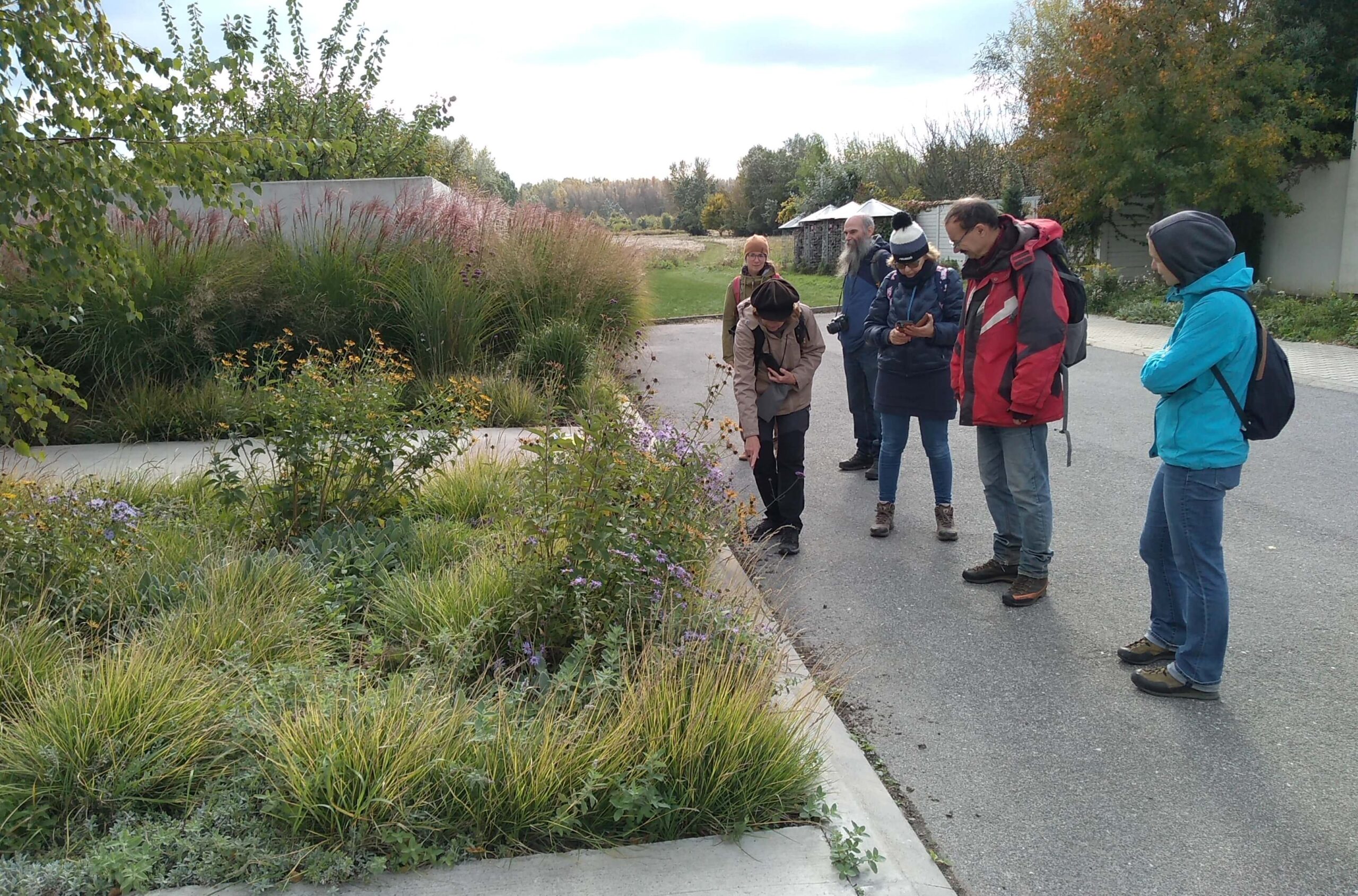
On Saturday, 11 October 2025, a small group of nine botany enthusiasts gathered in Rusovce, a borough of Bratislava. The Slovak Botanical Society and the Plant Biology and Biodiversity Centre (CBRB) of the Slovak Academy of Sciences (SAS) invited them on an excursion that revealed how new, uninvited guests are establishing themselves in our nature.
The main focus was on two invasive plants: Chinese mugwort (Artemisia verlotiorum) and Sumatran Fleabane (Erigeron sumatrensis). Both have been spreading across Europe in recent decades, and their first mass occurrence in Slovakia was recorded precisely in the Rusovce area. The excursion was led by experts from the Institute of Botany, CBRB SAS – Dr Iva Hodálová, CSc., and Dr Pavol Mereďa, PhD.
This species was first described in France in 1877, named in honour of the Verlot brothers, who studied it. Later research showed that it is native to East Asia and was introduced into Europe, probably through contaminated soil accompanying ornamental Asian plants. In Slovakia it was first found in 2019 and has so far been recorded at around 30 sites, all within Bratislava.
Unlike other mugwort (Artemisia) occurring in Slovakia, Chinese mugwort produces long, branched rhizomes. These allow it to form dense stands that suppress the growth of other species. It was most likely introduced as a weed in the soil of potted ornamental plants and in commercial lawn seed mixtures. Fragments of its rhizomes also spread through the movement of contaminated soil during construction activities. The plant flowers very late, in October and November, so its seeds usually fail to ripen before the first frosts. The perennial rhizomes, however, survive even severe winters and continue to expand, producing new shoots.

The Chinese mugwort flowering.
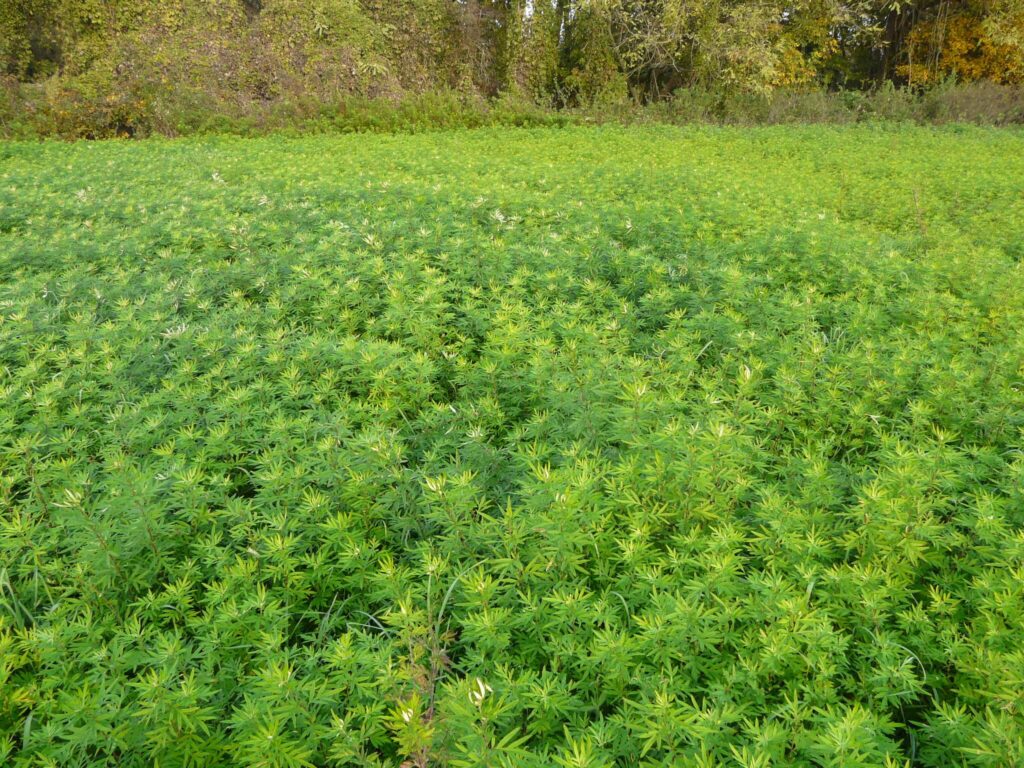
Mowed meadow with continuous growth of Chinese mugwort near Rusovce.
Although described from Sumatra in 1789, this species is in fact native to South America. It has been present in Europe since 1875, when it was first recorded in France. Until the 1990s it remained rare, but in recent decades it has spread rapidly from southern and western Europe towards the east and north. In Slovakia it was first recorded in 2016, so far only at six sites in Bratislava.
Unlike Chinese mugwort, Guernsey fleabane is an annual with a different strategy. It quickly colonises bare ground and produces enormous numbers of tiny seeds – hundreds of thousands from a single plant. These are dispersed by wind, in the soil of ornamental potted plants, on the clothing and luggage of tourists, by vehicles and in transported goods. Although both species have so far been found in Slovakia only in Bratislava, it is likely that they occur elsewhere but have been overlooked or confused with similar species.
Participants in the Rusovce excursion also encountered several other recently introduced plants that are still rare in Slovakia. These “new immigrants” usually escape from gardens where they are grown as ornamentals.
Among them were the robust Chinese Silver Grass (Miscanthus sinensis), first recorded in Slovakia in 2013; Purple Fountain Grass (Cenchrus purpurascens), native to East Asia and Australia, found in 2016; Lindheimer’s Beeblossom (Oenothera lindheimeri), first noted in 2019; Argentinian Vervain (Verbena bonariensis), also recorded in 2019; and the delicate Mexican Feather Grass (Nassella tenuissima), first found in 2020. Although still rare, experts warn that these species, like other non-native plants, may in future spread more widely into the wild.
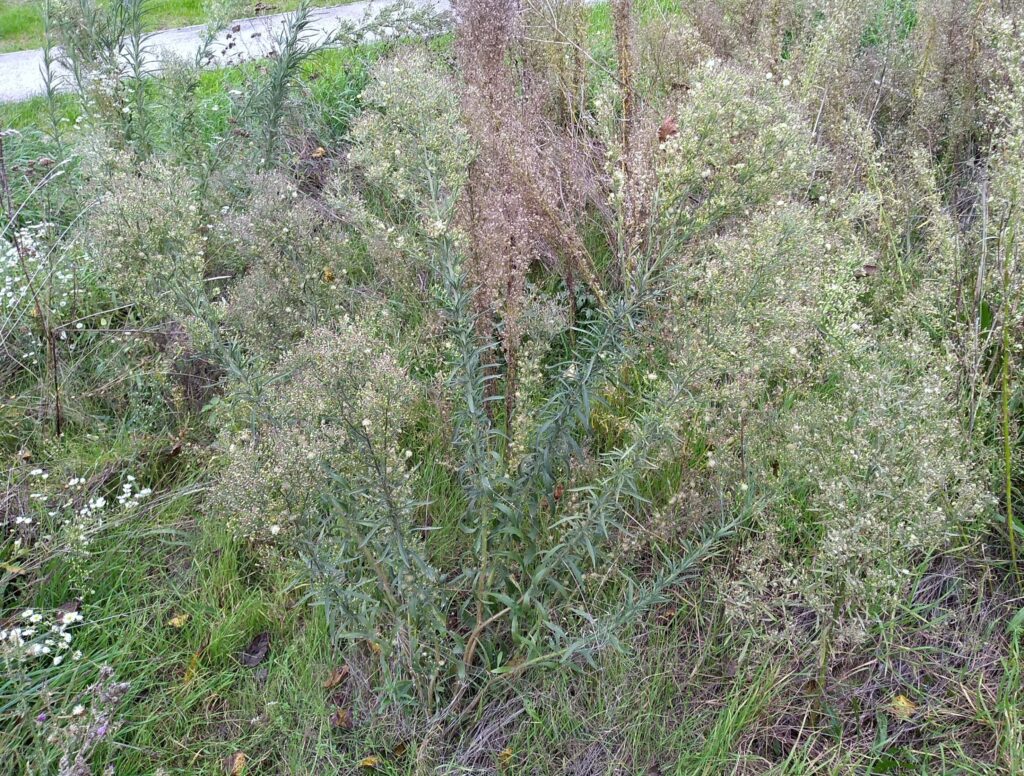
A massive, branched specimen of Guernsey fleabane.
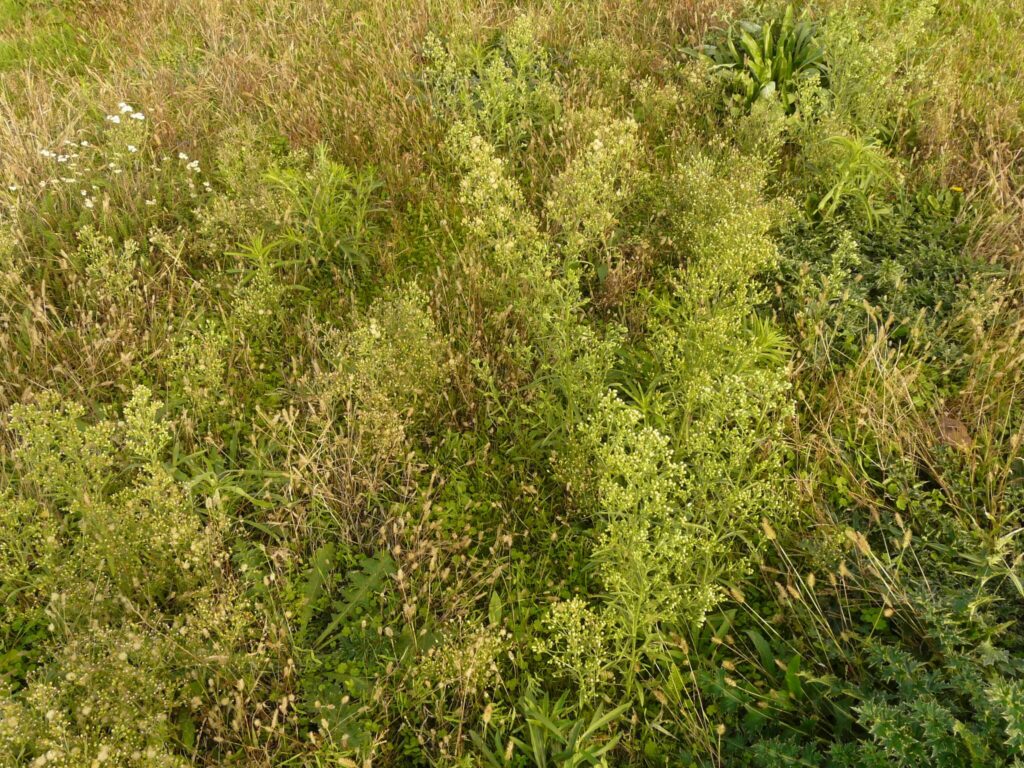
Blooming shoots of Guernsey fleabane on a mowed lawn near Rusovce.
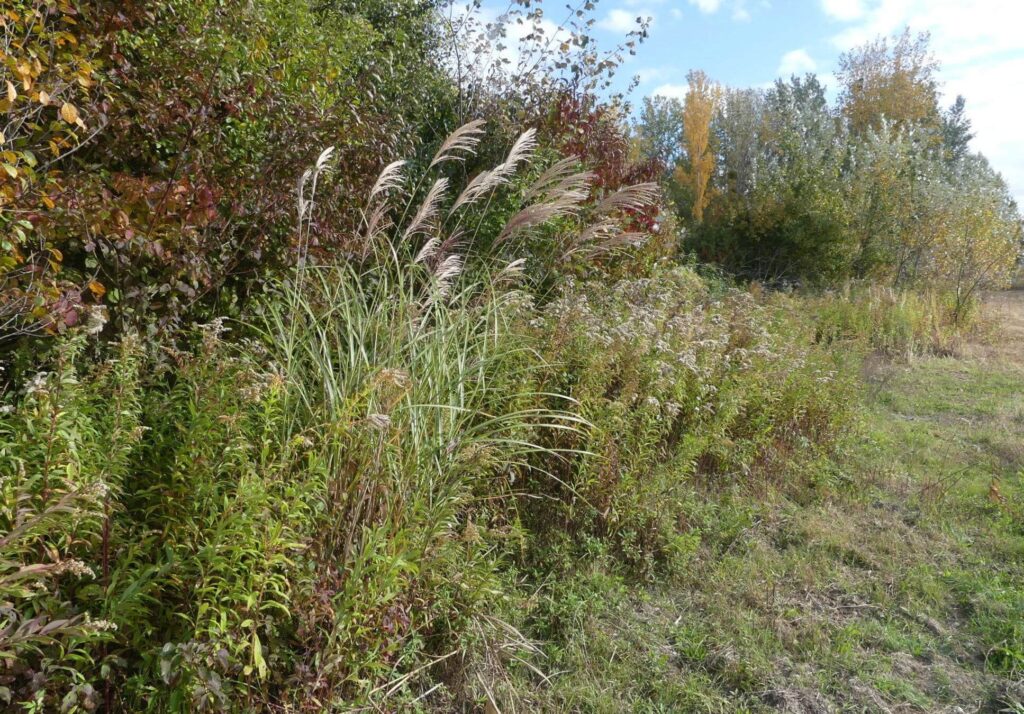
Chinese silver grass on the edge of a meadow near Rusovce.
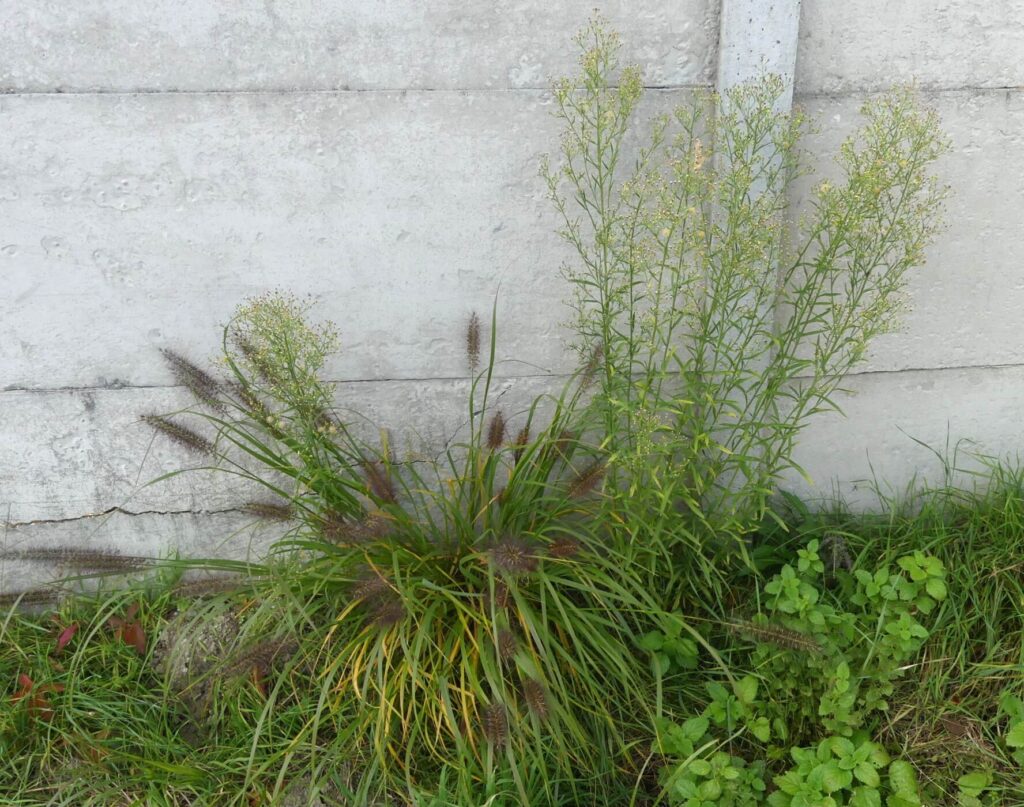
Purple loosestrife (left) and Guernsey fleabane (right) on the edge of a mowed meadow near Rusovce (bottom right: trampled specimens of the non-native medicinal plant Medicago sativa).
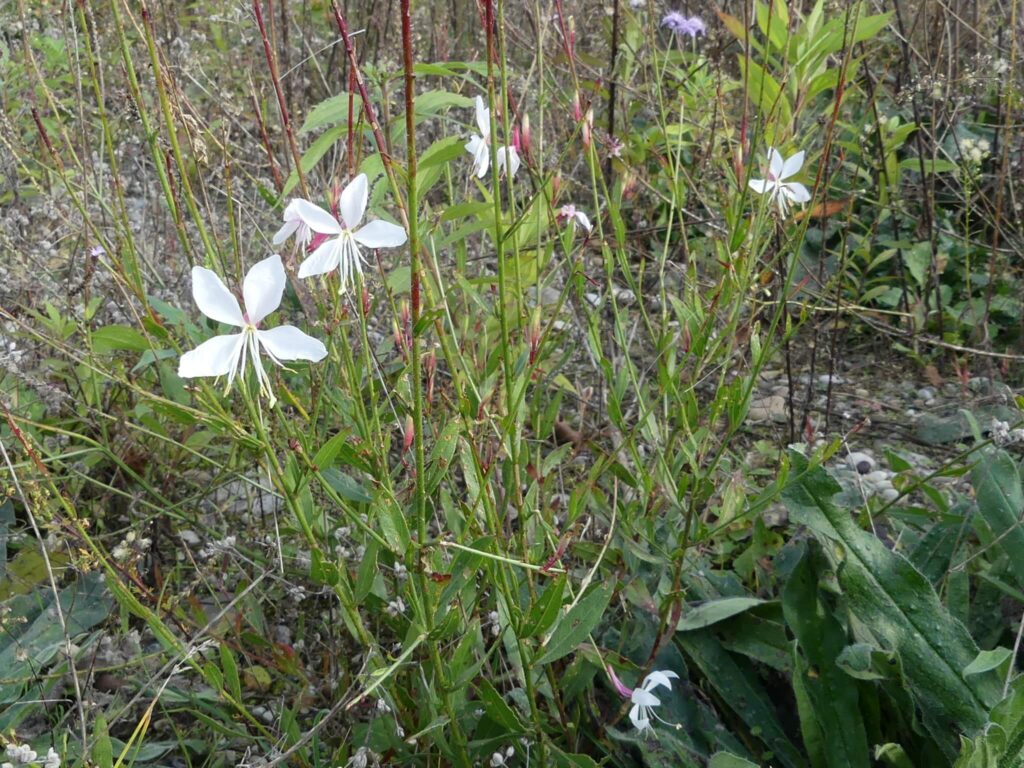
Lindheimer’s beeblossom on bare soil near Rusovce.
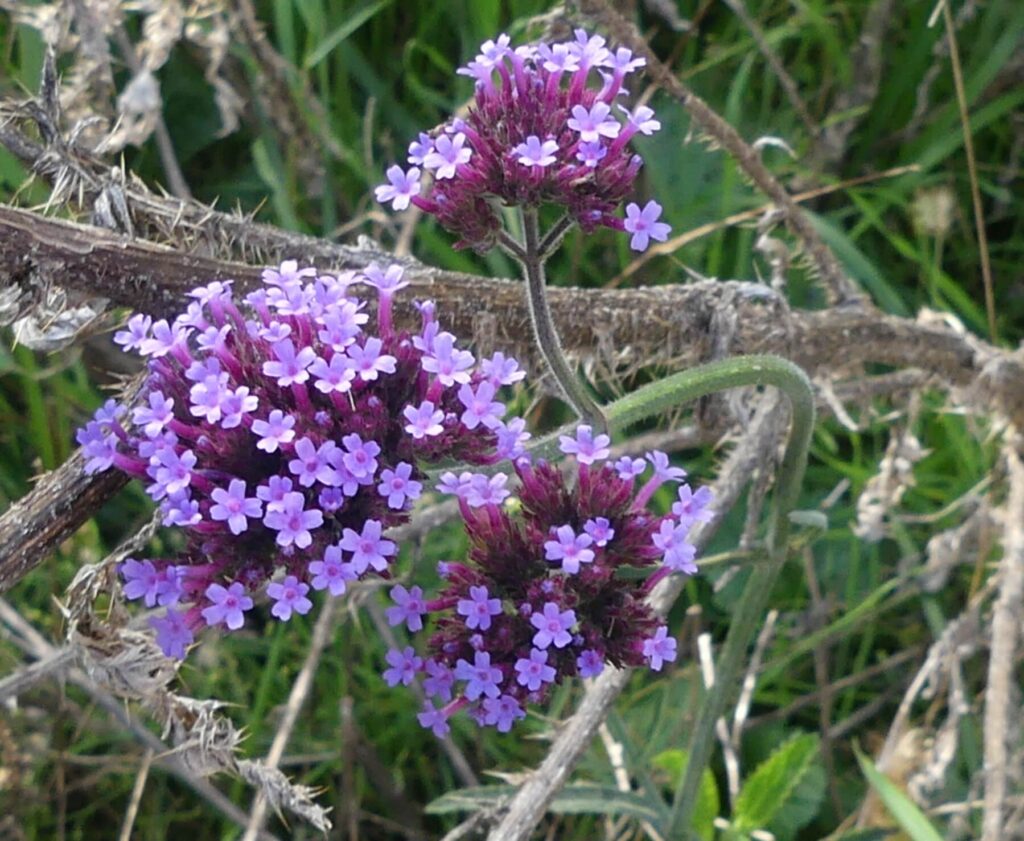
Purpletop vervain in ruderal vegetation near Rusovce.
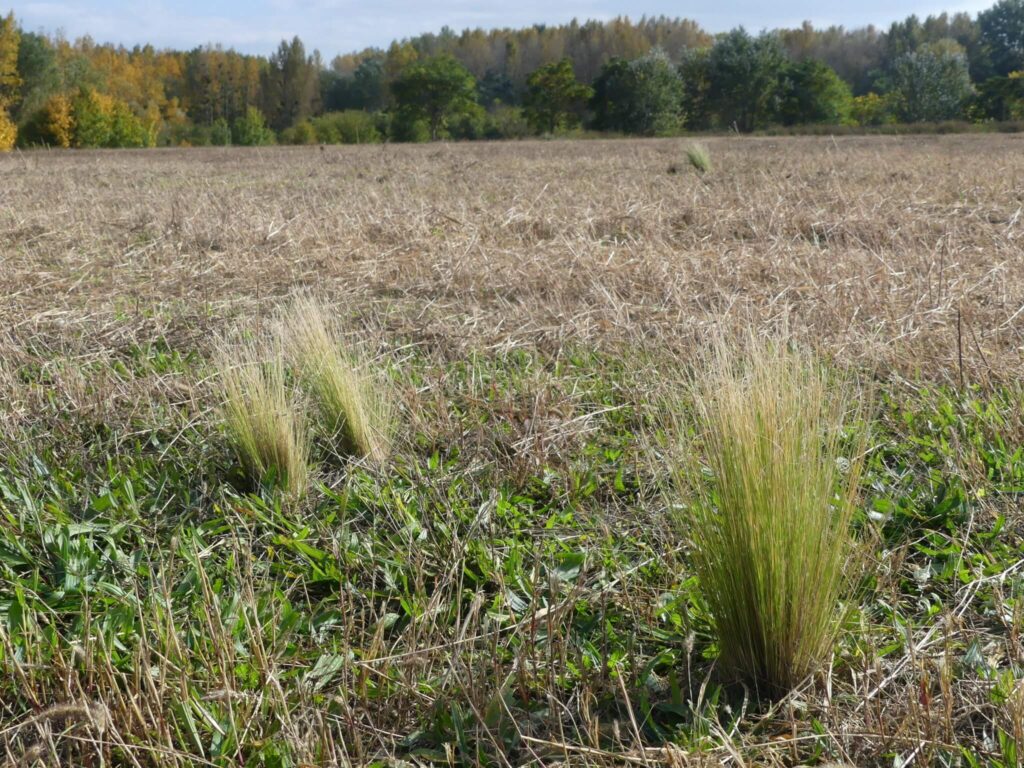
Clumps of Mexican feathergrass growing on a mowed lawn near Rusovce.
The Rusovce excursion also highlighted the broader picture: Bratislava’s native flora is under heavy pressure from non-native species. Many have already become invasive and are displacing local plants. Among trees, Canadian Poplar (Populus ×canadensis) dominates, alongside Tree of Heaven (Ailanthus altissima) and Box Elder (Acer negundo, syn. Negundo aceroides). Among herbs, species such as Common Milkweed (Asclepias syriaca), Nuttall’s Waterweed (Elodea nuttallii), Bohemian Knotweed (Reynoutria ×bohemica, syn. Fallopia ×bohemica), Himalayan Balsam (Impatiens glandulifera) and Canadian Goldenrod (Solidago canadensis) are widespread. Particularly abundant are three North American invaders: Common Ragweed (Ambrosia artemisiifolia), Annual Fleabane (Erigeron annuus) and Giant Goldenrod (Solidago gigantea).
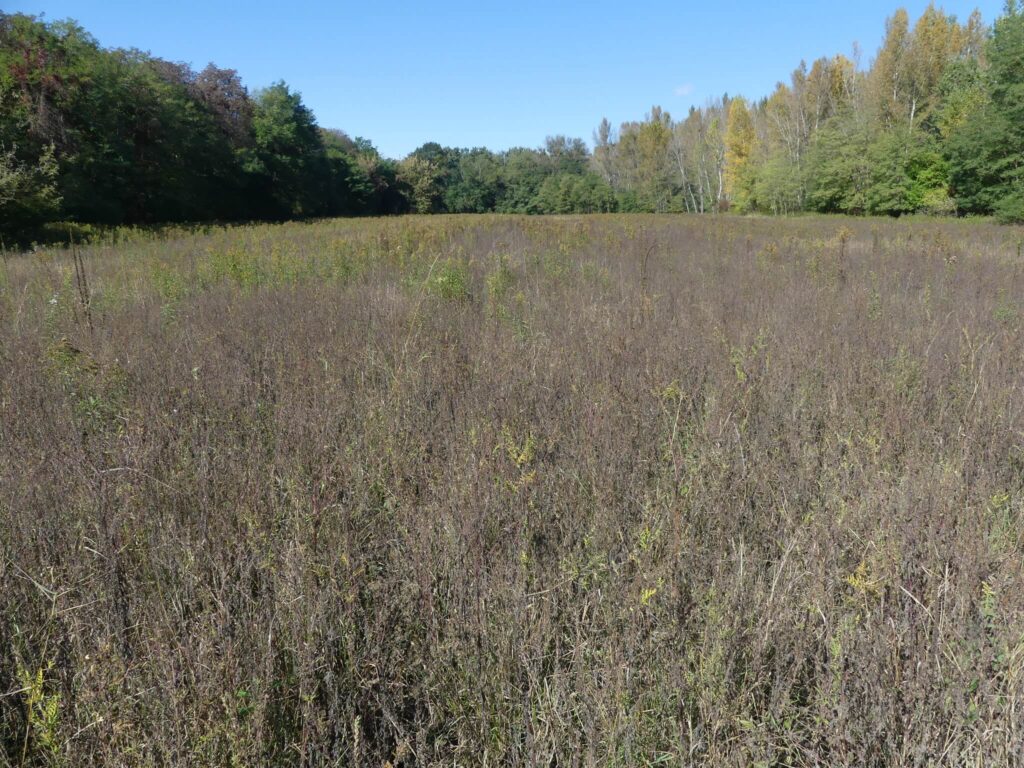
Growth of two invasive North American species on a plowed field near Rusovce. Dried, seeded individuals: ragweed; flowering individuals in the background: giant goldenrod.
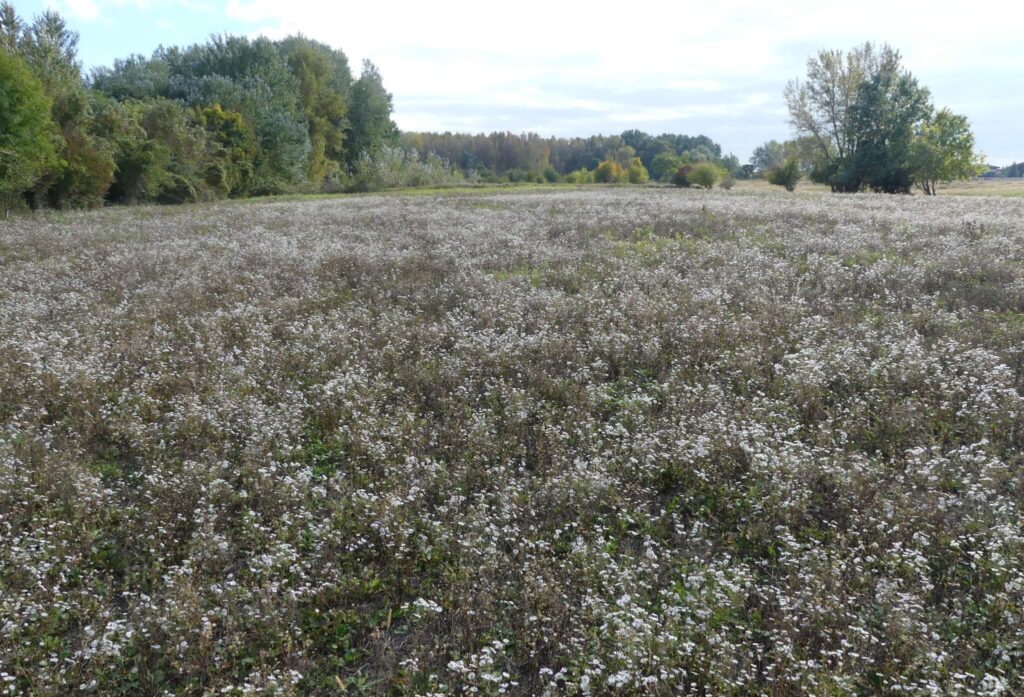
Blooming specimens of North American annual starflower (Aster annuus) in a mowed meadow near Rusovce.
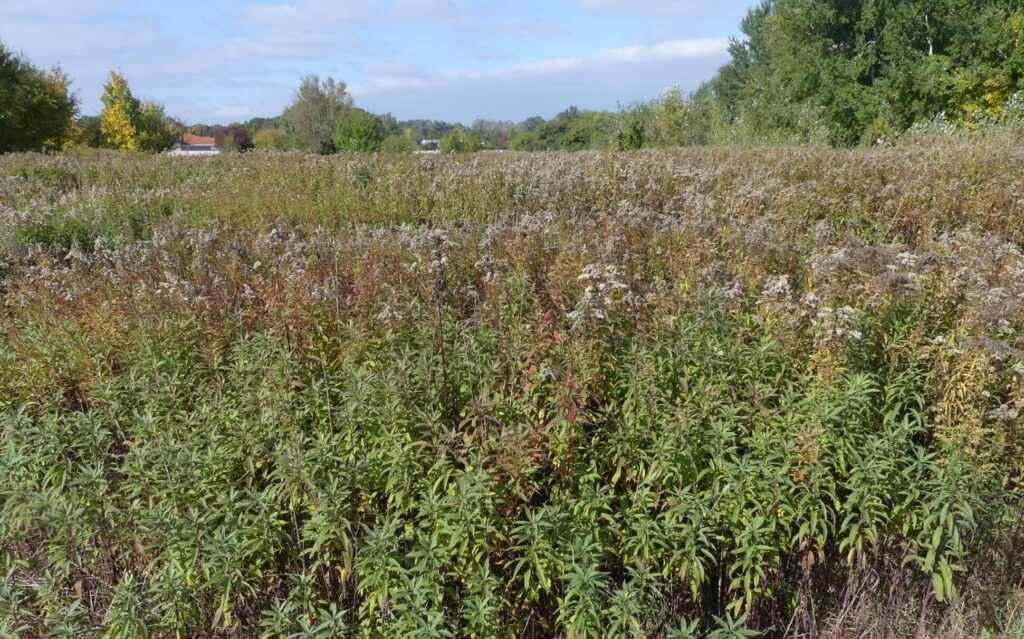
Flowering invasive goldenrod in an unmowed meadow near Rusovce. Millions of ripe seeds are ready to be spread by the wind.
The outlook for Rusovce and its Danube floodplain forests is bleak. For decades, native species have been retreating, replaced by plants from abroad. The excursion confirmed that alongside long-established aliens, new potentially invasive species are continually arriving.
The conclusion is clear: much of the original flora of Rusovce and its surroundings has already vanished. What visitors admire today on their walks are, in reality, mostly aggressive species from North America and East Asia, introduced through human activity.
Text and photographs: Pavol Mereďa Jr.



